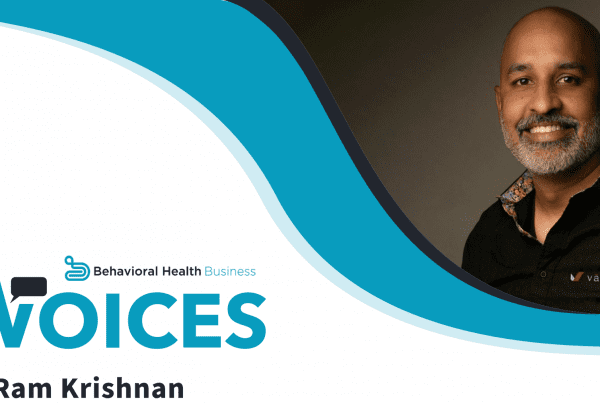Clear and organized documentation is a must for behavioral health providers. Progress notes and therapy notes are a central part of keeping your treatment strategy on track. Yet documentation is often a challenge to keep up with. One way to enhance productivity is through the use of note templates. A mental health progress note template or therapy note template can help you expedite the documentation process and write high-quality notes that better capture your patients’ treatment journey.
Read on to learn more about best practices for note templates, and how to get the most from this feature within an EHR.
The Role of Note-Taking in Behavioral Health
Notes serve several purposes for within a behavioral health environment. They are meant to benefit the clinician and the patient.
- Better clinical care. Progress notes help chart the overall course of your client’s condition, as well as how they respond to treatment, while therapy notes help you recall important details and insights related to each client’s situation. Both types of notes help you deliver better care.
- Get paid by insurance companies. Many insurance companies require the use of progress notes before they will pay on a claim.
- Security for clinicians. Should your treatment strategy ever be questioned, your notes may be vital to demonstrating the quality of care you delivered to your client. This can protect you if someone seeks to claim that your treatment was in some way negligent or harmful.
- Communication with other providers. Progress notes allow you to communicate with other healthcare professionals who may also be involved in your client’s care. Progress notes can even be shared with a client’s family members given the proper authorization. Notes help maintain a common standard of documentation that other providers can easily reference and understand.
Challenges of Traditional Note-Taking
One of the primary reasons to use a mental health progress note template is to make your work more efficient. Traditionally, clinicians have often found note-taking to be one of the most challenging aspects of their job. It is time-consuming to document every treatment session, particularly if you keep therapy notes in addition to progress notes.
Whether on paper or digital, taking too many notes in-session can complicate provider-patient rapport. Some clients interpret note-taking as the clinician being distracted. They may wonder whether you’re truly listening. This can be frustrating to a client, even alienating. It can seem like a catch-22 situation: you want to take notes to better understand your patient’s situation, but the notes make them feel that you aren’t really hearing them.
Some providers attempt to ease both the time commitment and the strain on patient-provider rapport by taking notes in shorthand. This can speed the process and help jog memory later without detailed word-for-word documentation. Other clinicians try to simply remember as much detail as possible and write all notes after the session, though this can be tricky if you see patients back-to-back.
Then, there are security concerns. Pen-and-paper notes must be kept at a secure physical location that others can’t access, such as a locked filing cabinet in a clinician’s personal office. Notes kept in electronic format need similar protections, such as password authorization or encryption.
Introduction to Mental Health Progress Note Templates
Using a template for note-taking is one way to save time on documentation, with the added benefit of creating a common format for communication between providers. Notes give you a framework to start from and help you determine what information to include. You simply fill in the specifics about each session.
One example of a popular mental health progress note template is the SOAP notes strategy. SOAP stands for:
- Subjective: A section for subjective information about your client’s feelings, thoughts, and goals for therapy.
- Objective: A section focused on factual data like the client’s appearance and behavior, or relevant medical details.
- Assessment: You assess the subjective and objective information. This can include diagnosis, evaluating the severity of the condition, and the client’s response to treatment.
- Plan: Next steps for treatment.
Many other basic templates exist, some more complex than others, such as DAP (Data, Assessment, Plan) and BIRP (Behavior, Intervention, Response, Plan) notes.
Templates make it easier to decide which information to include and how to organize it. They can speed up the note-taking process and ensure that you don’t leave out critical information.
The rise of EHRs in behavioral health care has removed one more step from the note-taking process by offering pre-built templates that can be filled out and stored within the EHR itself. A HIPAA-compliant EHR also addresses security concerns, as the notes will be protected by the same system that houses patient records. Prebuilt templates aren’t limited to progress notes and therapy notes; you can create them for intake assessments, treatment planning, and other features.
Customizing Templates for Individualized Care
It’s important that the note templates within an EHR be customizable. You may have specific documentation needs or preferences that a standardized template doesn’t address; without the ability to tweak it, the template won’t be very useful to your work.
Some examples of valuable customization features include:
- Checkboxes, allowing you to record info with just a click
- Carry-over options from previous notes, so you can pull forward specific info and narratives from previous documents
- Auto-generating narrative features to speed your narrative documentation (these should be editable after generation).
- Additional fields to add
- The ability to rearrange the order of fields
Customization may seem like an afterthought, but it can be critical to a practice’s success with note-taking software. For example: Mount Diablo Unified School District Counseling Services needed to follow documentation standards of the local health department, which changed frequently. Adjustable templates allowed the school counselors to easily meet these changing requirements. In other cases, private practices like The Mental Mediator use customization to meet the needs of many different therapists within one system, allowing every provider to use notes the way they prefer.
Customization makes the EHR note-taking process easier and more accessible for everyone.
Compliance and Legal Considerations
Privacy is of the utmost importance when it comes to your notes. Therapy notes fall under the category of protected health information (PHI), and progress notes should only be available to those with proper authorization, such as other providers and family members. HIPAA laws govern how you must protect these documents.
Having your notes program fully integrated within a HIPAA-compliant EHR system can solve this problem handily. An EHR with strong privacy features and encryption will protect these documents from unlawful exposure.
Compliance is another area where note templates may be helpful. Therapy notes and progress notes should contain separate information (progress document the client’s condition and progress in general terms, while therapy notes are personal notes for the provider), and templates can help you abide by this separation by dictating which information goes in which note.
You can learn more about HIPAA regulations here.
Could Mental Health Progress Note Templates Help Your Practice?
Prebuilt custom note templates can significantly enhance your productivity and documentation quality. They can help you overcome many of the traditional pitfalls of note-taking and make your work go faster. When written within an EHR solution, they can easily be HIPAA compliant and protect your clients’ valuable data.
If you’d like to know how note templates could help your practice, contact Valant today for a demonstration.









